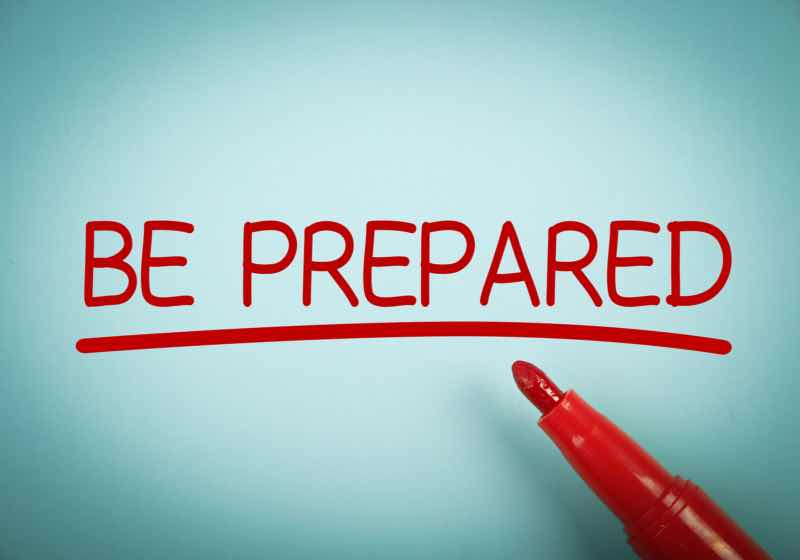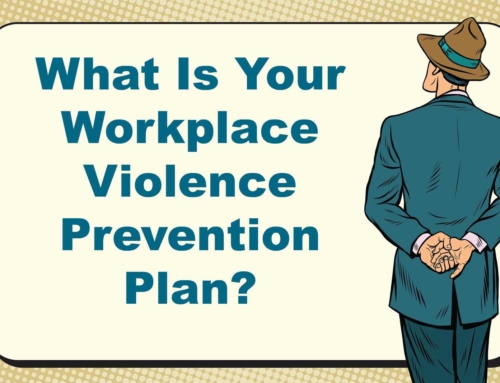Train Your Team to Prepare to Avoid Workplace Violence
The very first question that I ask audiences when we deliver Workplace Violence Prevention training is: “Why do you think this training is important?”
Many times, participants think it’s because their organization is “dotting their I’s and crossing their T’s” with regards to their legislative obligations.
That’s incorrect.
The reason we provide the training is because we want participants to know what their response will be before they actually get into a safety situation in the workplace. You may have heard the expression “forewarned is forearmed”?

In the world of Workplace Violence, how an individual perceives a situation will, in large part, dictate what their response will be.
I remember back in my police academy days when our bands of recruits were being taught about ‘tactical considerations’.
The problem we faced was that perceptions differed from officer to officer. In other words, how each person interpreted those ‘tactical considerations’ deeply impacted how they saw each situation, and therefore also affected the action that they might take.
Think about incidents we come across in the media from time to time: One officer involved in a situation has viewed that situation one way, and responds accordingly; whereas another officer, standing right next to the first officer, sees the situation in a different way, and therefore responds differently.
In the recruit training, it was stressed to us time and time again that communication between officers is key (critical, in fact). This communication could prevent, on the low-end, confusion between officers, and on the high-end, a dangerous gap that might result in someone getting hurt (or worse).
So, why is this important to you?
It might not seem like it, but this applies to every situation where workers find themselves faced with a person whose behaviour gives cause for concern.
Tactical Considerations
Here is the list of those ‘tactical considerations’ that impact our perception, and therefore our responses:
- What is my exit strategy?
- How quickly, and exactly how, can I get to safety should I need to?
- Can I disengage from this situation, and what would be the consequences of such disengagement?
- How does my personal appearance impact the situation?
- Do I appear confident?
- Do I appear professional?
- Do I appear competent?
- How many (if any) other employees are around?
- Are those employees obvious to the person that I am dealing with?
- What is the availability of back-up should I need it?
- Do any of my organization’s Polices and/or Procedures apply in this situation?
The list of ‘tactical considerations’ for police officers is more extensive, of course– mainly because most employees are generally not wearing bulletproof vests or carrying around a sidearm.
However, the list that I have provided can, and should, act as a mental checklist for employees when they are starting to think about how they would react in certain situations.
Another problem employees sometimes face is learning how to properly engage with people and appear welcoming, but wary, at the same time. I understand it’s tough.
After all, how are you supposed to be that stand-out Customer Service Attendant, and yet at the same time be glancing nervously towards the “EXIT” door every two seconds?
That’s where being “forearmed” comes into play.
Moreover, this personal preparation should happen a long time before you even meet the person whose behaviour you have concerns about.
Important aspects of that personal preparation revolve around your Physical and Verbal Approach to people.
Physical and Verbal Preparation
Here are some thoughts to assist you on your Physical Approach to a situation, and using effective physical cues:
- Lean forward slightly towards the other person
- Nod to acknowledge what is being said to you
- Ensure that you look welcoming and interested
- Use open gestures and stance
- Don’t look impatient
- Use appropriate eye contact
- Ensure that your tone of voice is friendly and accepting
- Use a calm, confident, and reassuring tone
- Allow the other person time to speak as well
And here are some thoughts to assist you on your Verbal Approach to a situation:
- Use Minimal Encouragers: Short word acknowledgements demonstrating that you are listening and paying attention
- Paraphrase: Restate the person’s words into your own, using some of their key words
- Make Summary Statements: An overall review to re-cap the main facts and ideas expressed in the dialogue with the person
- Use Open-Ended Questions: Encourages the person to open up and engage in descriptive narrative
- Use Close Ended Questions: Helps to obtain facts and specific information
- Use “I” Statements: Helps to avoid the appearance that you’re placing blame on the other person
These suggestions may sound complicated when you’re just starting out in learning about conflict resolution techniques, but they are all common ideas that that will feel natural once you gain confidence and start to see their effect on most situations.
Remember, these are certainly not the be-all and end-all and will not suddenly turn you into Henry Kissinger’s protégé, but they are part of time-tested, proven strategies used to de-escalate situations.
If these suggestions have piqued your interest, there are lots of great books out there to assist your learning. Below are some personal recommendations that sit on my bookshelf here at the International Headquarters:
- Thinking Fast and Slow, Daniel Kahneman
- Verbal Judo: The Gentle Art of Persuasion, George Thompson
- How to Tell Anyone Anything, Richard S. Gallagher
- Games People Play, Eric Berne
- Emotional Intelligence, Daniel Goleman
- The Power of Tact, Peter Legge
- Crucial Conversations; Patterson, Grenny, McMillan, & Switzler
Pick one and read it. After all, anytime we can learn more about how we will react to a situation is a good thing.
And that’s why Workplace Violence Prevention training is important.







Leave A Comment